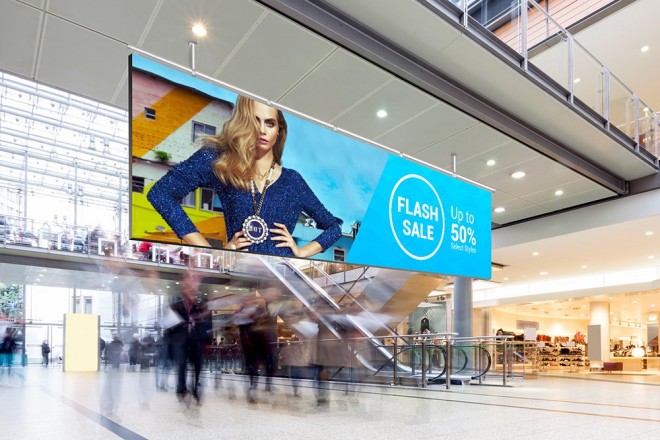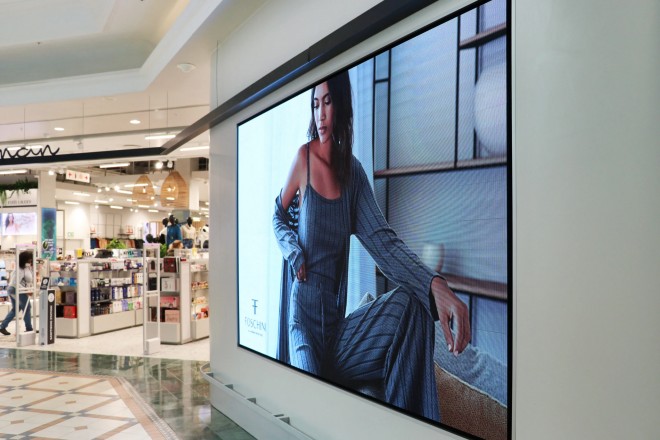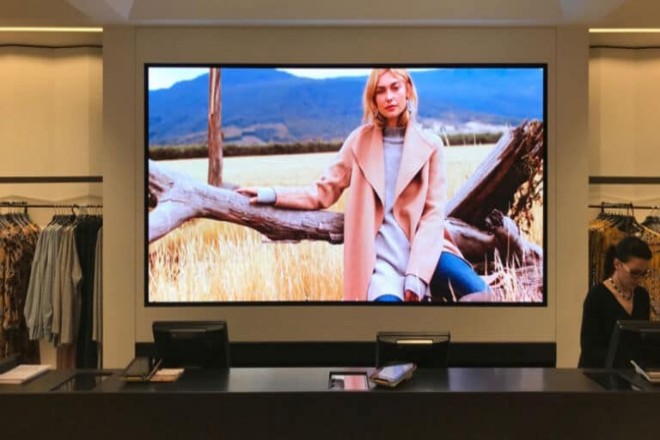소개

For any electrical appliance, electrical safety is very important and is essential to ensure the performance of the equipment and personal safety. LED 디스플레이 are no exception. This article will provide you with a practical safety guide to help you ensure the safety of the use process while enjoying the convenience brought by LED displays.
1. Power supply requirements and voltage stability of LED displays
When we discuss the 전원 of LED display screens, there are several key points that cannot be ignored to ensure that the display screen can operate continuously and stably and extend its service life.
첫 번째, the voltage and frequency standards are crucial. The power supply voltage of LED display screens is usually set to 230V (this is the standard voltage adopted in Europe and many other countries), but it is also allowed to have a fluctuation range of ±10%.
That is, the voltage should be between 207V and 253V. At the same time, the frequency of the power supply is usually 50HZ, and a fluctuation of ±5% is allowed. That is, the frequency range should be between 47.5HZ and 52.5HZ. These standards ensure the stability of the power supply and the normal operation of the display screen.
두번째, the stability of the power supply is crucial for LED display screens. Voltage fluctuations may cause various problems on the display screen, such as flickering and uneven colors, and may even damage the circuit and lamp beads on the display screen. Therefore, the stability and reliability of the power supply must be ensured.
In practical applications, a variety of measures can be taken to stabilize the voltage, such as using voltage stabilizers, uninterruptible power supplies (UPS), and other devices to reduce the impact of voltage fluctuations on the display screen.
게다가, there are some additional considerations to consider. For example, LED modules are usually powered by DC. Usually, +12V or +24V (depending on the specific model and specifications) and AC power supply are absolutely prohibited.
When connecting the power supply, you must ensure that the positive and negative poles of the power supply terminals are correctly connected to avoid damage to the product.
For specific application scenarios such as vehicle-mounted LED displays, a dedicated power supply designed for wide voltage input should be selected to ensure stable operation under different voltage environments.
In terms of daily maintenance, the LED display should be cleaned and maintained regularly to keep its surface clean and dust-free to ensure good heat dissipation and viewing effects.
동시에, components such as power cords and connectors should be checked regularly for looseness or damage, and aging components should be replaced in time to ensure long-term stable operation of the display.
Through these measures, it can be ensured that the LED display operates stably and reliably under foreign power supply voltage standards.
2. Grounding and lightning protection measures for LED display screens

As an important tool for modern information display, the safety and stability of the operation of LED display screens are crucial. Among them, grounding safety and lightning protection are key links to ensure the long-term stable operation of LED display screens.
1). Grounding safety
In short, grounding safety means ensuring a good electrical connection between the LED display and the earth to eliminate static electricity and prevent potential hazards such as lightning strikes.
- Reliable earth contact:
The outer shell of the LED display should be connected to the earth at the same potential, which means that the metal part of the display needs to be connected to the earth through a dedicated grounding wire to ensure that static electricity can be discharged in time.
The grounding wire should use a dedicated yellow-green two-color wire and ensure that it is tightly connected to the grounding terminal to avoid loosening or falling off.
If there is no special grounding terminal on site, you can choose to connect to an iron water pipe or sewer pipe that maintains good contact with the earth, but be sure that these pipes are not flammable or explosive.
- Strict isolation of ground wire and neutral wire:
During the grounding process, the ground wire and the neutral wire must be strictly distinguished and cannot be confused. The neutral wire is mainly used for the current loop, while the ground wire is used for safe grounding to prevent electric shock or static electricity accumulation.
Grounding resistance is an important indicator for measuring the grounding effect and is generally required to be less than 10 ohms. If this requirement is not met, additional artificial grounding measures may be required, such as adding a grounding grid.
2). Lightning protection
Lightning protection mainly uses a series of measures to reduce the damage of lightning to LED display screens.
- Install lightning rods:
Installing lightning rods on the supporting structure of lightning-prone areas or outdoor LED display screens can effectively guide lightning currents to enter the ground safely, thereby protecting the display screen from lightning strikes.
- Protection of power lines and signal lines:
Power lines are one of the main ways for lightning to enter the room. Therefore, it is crucial to install lightning arresters on the power lines. Lightning arresters can absorb or disperse the overvoltage and overcurrent generated by lightning, thereby protecting the power supply system of the LED display screen.
Signal lines also need protection. According to the signal interface type of the system, select a suitable signal lightning arrester for installation, which can effectively prevent lightning from entering the interior of the display screen through the signal line and causing damage.
- 정기 검사 및 유지 관리:
Regularly check the grounding of the LED display screen to ensure that the grounding resistance meets the requirements and the grounding wire is not loose or damaged.
Check whether the lightning rod, lightning arrester and other equipment are intact and effective. If damaged, they should be replaced in time.
Before the thunderstorm season, conduct a comprehensive inspection and maintenance of the lightning protection facilities to ensure that they are in good condition.
- Avoid using in bad weather:
In strong thunderstorm weather, the LED display should be avoided as much as possible. If it must be used, ensure that all lightning protection measures are in place and pay close attention to weather changes so that the display can be turned off in time when necessary.
3. Correct operation of the LED display screen switch
In order to ensure the long-term stable operation of the LED display and extend its service life, the following is a detailed guide on the operation of the LED display switch:
1). Switching sequence
1.1). Power-on process:
Step 1: First, make sure that the control computer is started and running stably.
Step 2: Then, turn on the power switch of the LED display, let the screen gradually light up, and enter the preheating state.
Step 3: After waiting for the screen to be fully lit and stable, start playing or adjusting the display content through the control software.
1.2). Shutdown process:
Step 1: Before turning off the LED display, stop playing the content through the control software and make sure that the image on the screen is cleared.
Step 2: Then, turn off the power switch of the LED display and let the screen gradually go out.
Step 3: Finally, turn off the control software and computer to complete the entire shutdown process.
2). Switching interval
- Important tips:
When turning on and off the LED display, a certain time interval should be maintained. It is generally recommended that the time interval between switching on and off should be greater than 5 minutes to avoid frequent switching operations from damaging the circuit and lamp beads of the display.
3). Other operating precautions
- Avoid starting with a full white screen:
Since the impact current of the system is the largest in the full white screen state, it may cause damage to the display. Therefore, before starting the display, try to avoid setting the screen to a full white state.
- Pay attention to ambient temperature and heat dissipation:
When the ambient temperature is too high, or the heat dissipation conditions are poor, the LED display should be used with caution. Excessive temperature may accelerate the aging of the display’s internal circuit and lamp beads, thereby affecting the display effect and service life.
- 정기적인 유지 관리:
In order to maintain the optimal performance of the LED display, the display should be cleaned and maintained regularly. Check whether the power cord and connectors are loose or damaged, replace the aging parts in time, and clean the dust and dirt on the surface of the display.
4. Avoid the maximum power state operation of the LED display.
In order to ensure the efficient and stable operation of the LED display, extend its service life, and reduce operating costs, a series of strategies need to be adopted to prevent the display from being in the maximum power state for a long time.
This includes preparation before startup, adjustments during daily operation, regular maintenance and inspection, hardware and system upgrades, and the establishment of a monitoring mechanism.
첫 번째, avoid starting with a full white screen before startup, and set the screen to a non-full white screen, such as a gradient color or a simple pattern, through the control software to reduce the startup power and the impact current of the power distribution system.
둘째, in daily operation, the brightness and contrast of the display screen need to be reasonably adjusted according to the changes in ambient light, and high-명도, high-contrast images, or videos need to be avoided for a long time to reduce power consumption and wear.
동시에, switch the display content in time to avoid staying on the same screen for a long time to reduce the excessive use of local lamp beads.
Regular maintenance and inspection are equally important. It is necessary to regularly clean the dust and dirt on the surface of the display screen and keep the heat dissipation holes unobstructed to improve heat dissipation efficiency and reduce power consumption.
동시에, check whether the power cord connectors and other components are tightly connected and not loose or damaged to ensure the stable operation of the power distribution system. In addition, choosing an efficient power supply and regularly updating the display control system software are also effective means to reduce power consumption.
마지막으로, a monitoring mechanism should be established to monitor the power consumption, temperature, and other key parameters of the display in real-time and promptly discover and solve problems.
At the same time, train operators to improve their awareness and skills of display operation and maintenance to ensure that the display is always in the best operating state.
5. Power supply line and equipment safety of LED display

In order to ensure the efficient and stable operation of the LED display and the personal safety of operators, it is crucial to optimize the power supply line and equipment safety. The following are optimization suggestions for the power supply line and equipment safety strategy of LED display:
1). Power supply line inspection and maintenance
- Regular inspection and preventive maintenance:
Establish a regular inspection system for power supply lines to ensure that a comprehensive inspection is carried out at least once a quarter, including power cords, connectors, sockets, and other components.
During the inspection, pay special attention to whether there are abnormal phenomena such as short circuits, tripping, burning wires, and smoking. Once found, measures should be taken immediately to repair them.
Implement preventive maintenance strategies, such as regular replacement of aging or worn line components, to reduce the possibility of failures.
- Professional maintenance and certification:
Non-professionals are prohibited from touching or repairing the internal circuits of the LED display to avoid electric shock or circuit damage. Maintenance work should be carried out by professionals with relevant qualifications and experience to ensure the safety and effectiveness of the maintenance process.
- . Power supply equipment safety and optimization Power supply selection and protection:
Select a power supply with reliable quality and appropriate power, and ensure that the power supply has overcurrent, overvoltage, short circuit, and other protection functions. Equipped with an uninterruptible power supply (UPS) or redundant power supply system to improve the stability and reliability of power supply.
- Grounding and lightning protection:
Ensure that the LED display has good grounding protection to prevent lightning strikes and electrostatic interference. In areas prone to lightning, lightning protection equipment such as lightning rods and lightning arresters should be installed to reduce the damage to equipment caused by lightning.
- Step-by-step power supply and load balancing:
When starting the LED display, a step-by-step power supply strategy is adopted to avoid the impact of the maximum power state of the entire screen on the power distribution system.
Through load balancing technology, the power supply load is reasonably distributed, the load of a single power supply is reduced, and the overall power supply efficiency is improved. 3). Optimization of use environment and safety measures
- Suitable environment and cleaning:
Maintain the LED display screen in a suitable environment, avoid extreme high temperature, high humidity, and high acid, alkali, and salt environment.
Clean the surface and interior of the display screen regularly to prevent dust and dirt accumulation, leading to poor heat dissipation and circuit short circuits.
- Safe operation and training:
Follow the correct power on and off sequence to avoid frequent switching and long-term continuous use.
Provide professional training for operators to improve their awareness and skills of the power supply line and equipment safety of the LED display screen.
4). Monitoring and early warning system
- 실시간 모니터링:
Professional monitoring tools are used to monitor the power supply line and equipment of the LED display screen in real time, including key parameters such as voltage, current, and temperature.
Once an abnormal phenomenon is found, the early warning mechanism is triggered immediately to ensure that potential safety hazards are discovered and handled in time.
- Data analysis and fault prediction:
Big data and artificial intelligence technology are used to conduct in-depth analyses of monitoring data and predict the occurrence of equipment failures.
Based on the prediction results, formulate a maintenance plan in advance to reduce the impact of failures on equipment operation.
결론
After the introduction of this article, I hope you have a clear understanding of the safe use of electricity for LED display screens.
Please be sure to implement these safety measures in daily use to ensure the safety of equipment and personnel. Safety is everyone’s responsibility. Let us work together to ensure the safe use of LED displays. If you have any questions, please contact professionals as soon as possible. Safety first, start now.
마지막으로 LED 디스플레이에 대해 더 알고 싶으시다면, 우리에게 연락해주세요.
